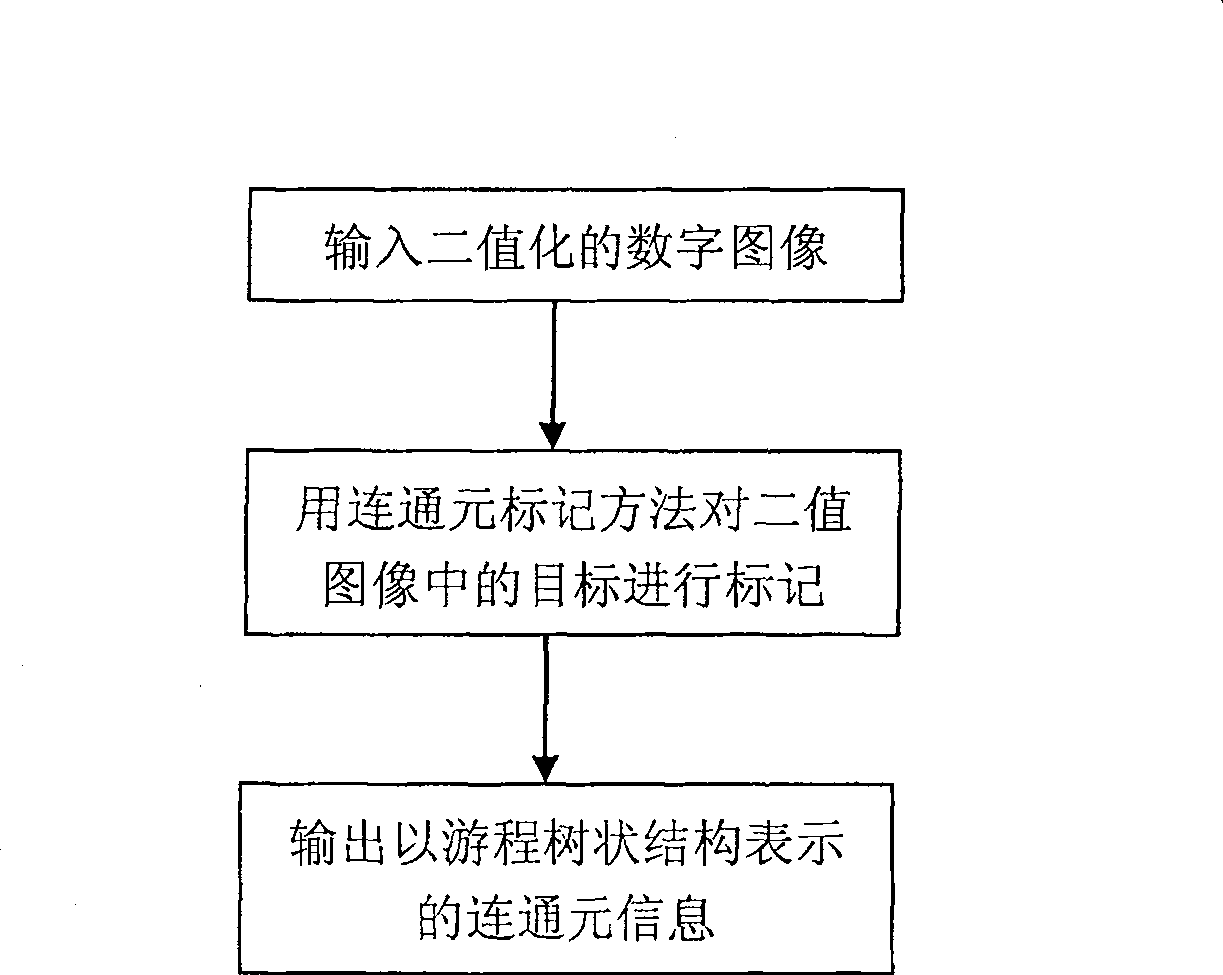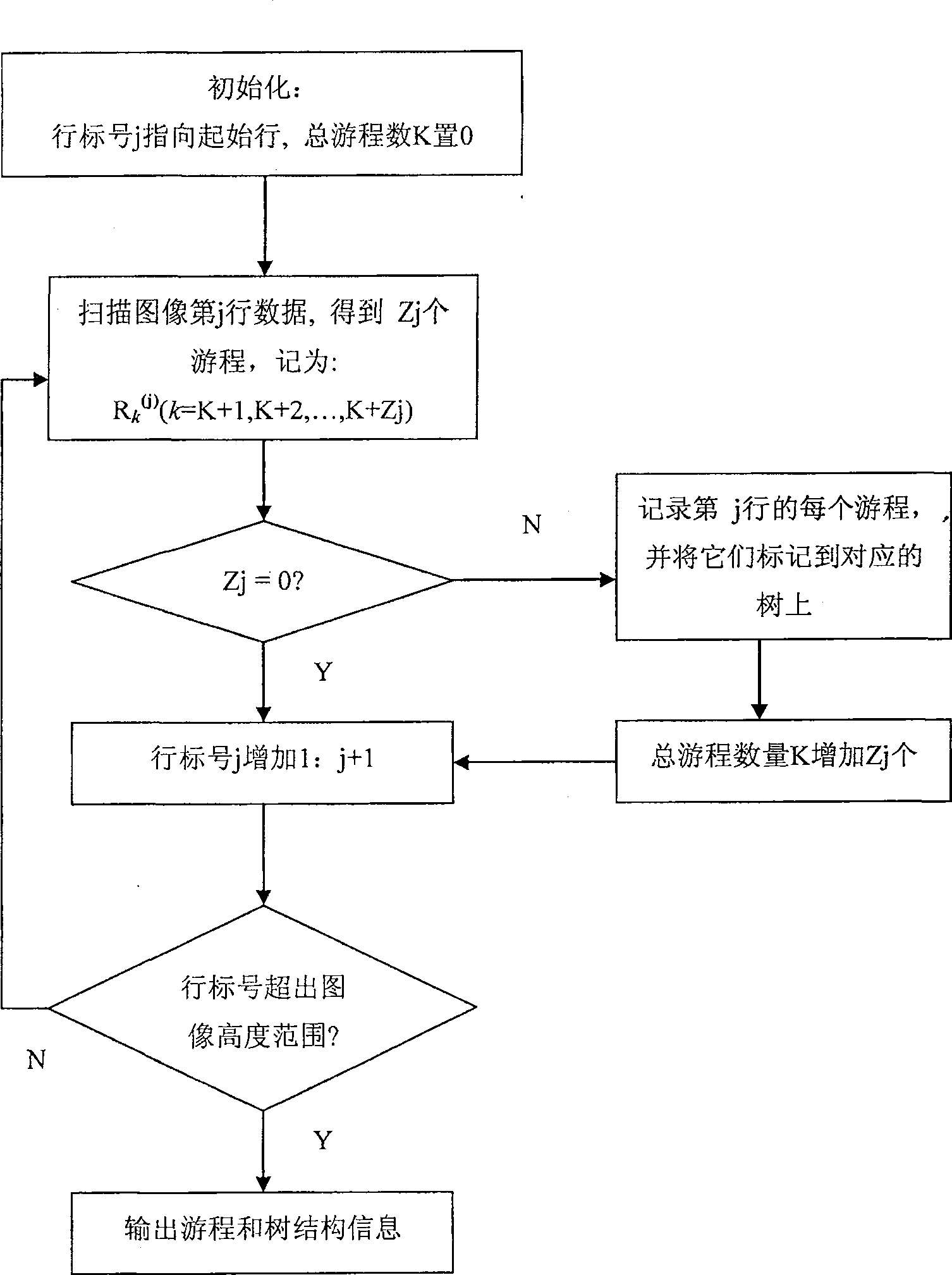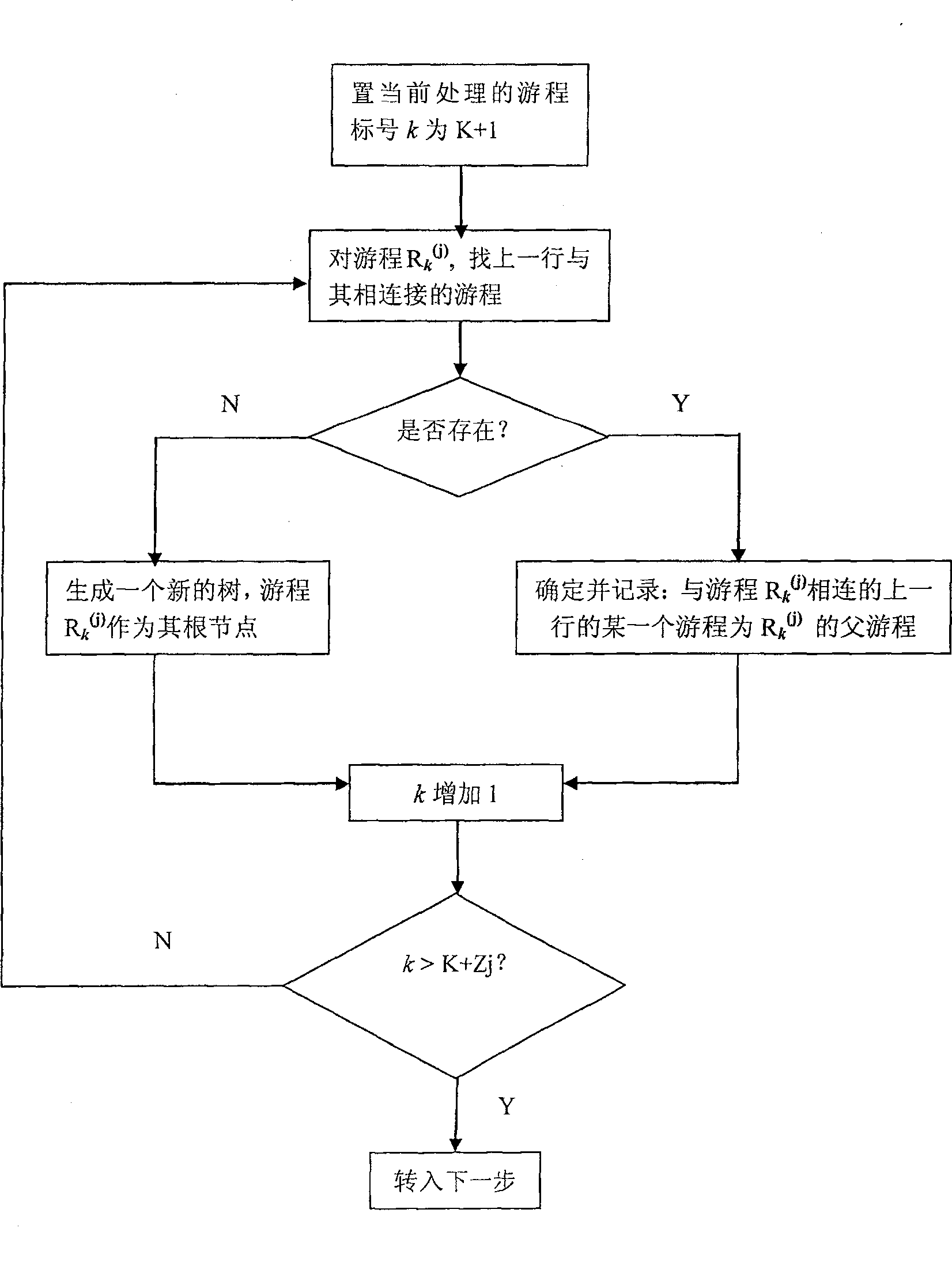Method for rapid making image connection element
A marking method and a technology of connected elements, which are applied in the directions of instruments, calculations, character and pattern recognition, etc., can solve the problems of large memory usage and time-consuming, and achieve the effect of improving the marking speed
- Summary
- Abstract
- Description
- Claims
- Application Information
AI Technical Summary
Problems solved by technology
Method used
Image
Examples
Embodiment Construction
[0044] The purpose of labeling connected components is to convert binary images into symbolic images, that is, to assign a label to each connected component to distinguish them. In the prior art, the most commonly used method is to process images sequentially, and establish an equivalence class table to store relevant information of equivalence classes. Each foreground (object) pixel is assigned a temporary label in the first pass based on the values of neighboring pixels. If two adjacent foreground pixels have different labels, these two labels are regarded as equivalence classes and recorded in the equivalence class table. In the second scan, the pixels belonging to the same equivalence class in the image are represented with the same label.
[0045] The purpose of the present invention is to realize a method for quickly marking connected elements based on run length and expressed in tree structure. First, the run lengths are extracted line by line from the image, and th...
PUM
 Login to View More
Login to View More Abstract
Description
Claims
Application Information
 Login to View More
Login to View More - R&D
- Intellectual Property
- Life Sciences
- Materials
- Tech Scout
- Unparalleled Data Quality
- Higher Quality Content
- 60% Fewer Hallucinations
Browse by: Latest US Patents, China's latest patents, Technical Efficacy Thesaurus, Application Domain, Technology Topic, Popular Technical Reports.
© 2025 PatSnap. All rights reserved.Legal|Privacy policy|Modern Slavery Act Transparency Statement|Sitemap|About US| Contact US: help@patsnap.com



